avid Gallaher would have been among the most imperishable legends of
All Black rugby because of the fact that he led the first landmark national team,
the "Originals" on their extraordinarily successful tour of Britain and France.
He was not only the leader but a key player in the controversial position
of wing forward and as one of the team's tactical masterminds. But the status of
immortality that Gallaher occupies in New Zealand rugby became even more assured
because of his early death. While serving as a company Sergeant in WWI, Gallaher,
not quite 44 years of age, died from wounds near Passchendaele, Belgium
in 1917. The great rugby writer Terry McLean said of him "In death, he acquired
a mystique. His grave became a shrine." A great-nephew of Dave Gallaher said "all that's good about a New Zealander. He just rolled his sleeves up. He led his men in the battle in the war, and he led his men in the battle on the field." Gallaher, the inspiring rugby captain and one of the deepest thinkers on the game in his era, was Irish-born, in County Donegal, who came to New Zealand with his parents as a child onboard the SS Lady Jocelyn in 1881. They left a very young infant called James Patrick behind (born on St Patrick's Day). What happened to him remained a mystery until 2006 when the aforementioned genealogical center established he died aged around six. It seems likely he was poorly from birth and the family knew he might not survive the voyage. The family's emigration to New Zealand was a disaster. His father became very ill, the shop business they had planned fell apart due to the death of a rich sponsor and his Mother was forced to support the family as teacher. She later died of breast cancer, forcing Dave to leave to work in Auckland in the 1890s. He became a departmental head at Auckland Farmers Freezing Company (AFFCO) and a stalwart member of the Ponsonby Rugby Club. He lived at 43 Lawrence St, Ponsonby. Dave was in the Ponsonby side which won the Auckland senior championship in 1897 and between 1896 and 1909 he played in 26 representative matches for Auckland. He was in the side which played the first Ranfurly Shield match against Wellington but his record at provincial level was not extensive. In January 1901 he joined up to serve in the Boer War, giving his age as 24 rather than the 27 years he was. It was a habit which was to follow him around - for the 1905 All Blacks 'Originals' tour to the UK and France he gave his age as 29 when he was 32, when he joined up for WWI he put his birth date three years forward, while his headstone at the Nine Elms Cemetery records him as 41 whereas he was, in fact, a few days short of his 44th birthday when he died. In South Africa he saw nearly one and a half years service in Transvaal, the Orange Free State and the Cape Colony, first as a corporal and later as a squadron sergeant major in the 10th New Zealand Mounted Rifles. Because of his service in the Boer War, as a corporal in the Mounted Rifles, he missed all of the 1901-02 seasons in New Zealand. His brothers, Henry and Charles, also fought in South Africa. Dave was clearly a forward of uncommon ability, strength and tactical awareness. He was big for a forward of that era at 1.83m tall and 84kg in weight. In his early career he was a hooker in the 2-3-2 scrum and after playing for the North Island in 1903 it was in that position he was chosen for the 1903 tour of Australia. By then Gallaher was nearly 30 but that tour was to be the start of an Illustrious three or four seasons in the national side. He played his first four matches as a hooker but for his final four, including the test, the first ever played by New Zealand, against Australia he was moved to wing forward. In 1904 he played the test against the touring British in Wellington. It was this test that Eric Harper, another of the 'First XIII' All Blacks to die in the war, made his debut. After appearing for the North Island again in 1905, Gallaher was made captain of the 'Originals' team for the tour of Britain and France. Eric also joined the tour. The appointment as captain however did not meet with universal acceptance and, indeed, Gallaher had not even been captain, or in the team, on the preliminary tour of Australia. There was a considerable anti-Auckland bias in other parts of the country and it was because of the stirrings of an antagonistic element within the team that on the boat trip to Britain, Gallaher resigned his post, as did the vice captain Stead. Despite the protests of team manager George Dixon that the New Zealand appointments of both men could not be challenged a vote was held among the players which confirmed the two leaders even though the result was far from unanimous. But Gallaher and Stead soon put aside any parochial factionalism and under their leadership the "Originals", the first team to be known as the All Blacks, became an incredibly successful unit. Some huge scores were posted and the history has turned the one defeat, the 3-0 loss in the international against Wales, into a cause celebre because of the non award of a try to Bob Deans. Starting in the test against the 'Originals' on the England side was John Raphael, a centre who went on to captain Great Britain against Argentina in 1910. He died of wounds he received on Messines Ridge on the day the battle began - June 7, 1917. Though the position of wing forward, in which Gallaher specialised, caused some concern to the British he was one of the side's leading players, making 26 appearances in all and of the five internationals missing only that against Ireland because of a leg injury from the Scottish game. He apparently kept up to date with the score however by telegram from his hospital bed, in the care of a doctor named Savage! If he had played he would have been the only Irish captain on the field! The captain in green was an Englishman recruited by Ireland called Basil McClear, who almost made the English team. That Gallaher was an outstanding leader was beyond dispute. The Originals were a team well ahead of their time in terms of preparation, planning and tactical execution. He was a tough minded man but some of the criticism he endured from the British over his wing forward play did irk him. His last Test was as captain of the "Originals" on New Year's Day 1906 against France in Paris. After the tour Gallaher played only occasionally, devoting himself to selecting and coaching, in which he was eminently well qualified. Gallaher's last game of rugby was unplanned. As selector-coach of an injury-beset Auckland team in 1909, he turned out against Marlborough at Blenheim; Marlborough won 8-3. He selected Auckland sides from 1906-16 and was a national selector from 1907-14. For many years he coached the Auckland Grammar School in the ethics and practice of the game. Gallaher married Ellen Ivy May Francis, sister of fellow All Black A H Francis, in Auckland, 10 October 1906. They had one daughter, Nora, born in 1908. She remembered her father as 'a jolly man'. Into recent times, though, he has continued to have a profile for in 1922 the Auckland union introduced a trophy for the province's club champion side named in his honour, the Gallaher Shield. It has been a fitting memorial to one of rugby's first great thinkers and to the first in a line of illustrious All Black captains. His profile was enhanced in 2005 when the Letterkenny RFC, the club closest to his birthplace in Ramelton, County Donegal, decided to name its ground the “Dave Gallaher Memorial Park” and unveiled a plaque at his birthplace. Members of the 2005 All Blacks, led by captain Tana Umaga, attended the unveiling. Following the death of his youngest brother, Douglas, in France in 1916, Dave, at the age of 40, signed up on 25th July but put his date of birth down as 1876 - three years younger! He enlisted as a Corporal with the NZEF and was promoted to Company Sergeant-Major. The force reached Devonport, Plymouth on 2nd May, where he reverted to rank of Temporary Sergeant and was dispatched to Sling Camp, Bulford, for further training. Six days later Dave left for Etaples in France as a full Sergeant. On June 26 1917 his unit went in action in the Third Battle for Ypres, fighting around La Basse Ville. Conditions were deplorable. After returning to rest camp, late in August the battalions began intensive training for Passchendaele. On October 1, the Auckland battalions marched through what remained of the town of Ypres and on the evening of 3 October were camped at what is now St Julian-Langemark, preparing for the next morning's battle. His battalion was part of the second wave of New Zealand's attack, stepping over the first wave at 8am and tasked with continuing the attack behind the advancing artillery barrage as far as Ravebeek. He was fatally wounded early in the morning of 4th October 1917 as the successful push to take s' Graventafel Spur took place. In drizzly rain, he had advanced through the deep mud of a small river and up the slopes ready to take over from the leading battalions for the second stage of the attack. A strong westerly wind chilled him to the bone and he waited for his orders. It was as he took over that his men came under heavy fire from a German stronghold named Korek, situated on the highest point of 's Graventafel ridge, and Dave Gallaher became one of the 330 New Zealanders to lose their lives in what is known as the Battle of Broodseinde. It was very shortly after the "step over" that Dave Gallaher was wounded in the head. He was evacuated from the battlefield to an Australian Advanced Dressing Station on Abraham Heights, some 700 metres from where the New Zealand Memorial now stands at s`Graventafel. Later he was transferred to the Third Australian Casualty Clearing Station near Poperinge which was little more than a tunnel attached to one of the trenches. As he lay dying on a pallet in the station, a Catholic priest was administering to the soldier lying in the pallet next to Gallaher's. The soldier's name was Edward Fitzgerald. The priest asked if he knew who his neighbour was, and when Fitzgerald said he did not, the priest said, "That is Dave Gallaher, Captain of the 1905 All Blacks." The ex-All Black bore a large mark on the side of his head. It could have looked in better times like the kick by a horse shoe. It was evident he was dying. His grave is at Nine Elms Cemetery and is frequently visited by everyone from All Blacks beginning with the 1924 Invincibles. More recent visits took place in 1991 and 2000. Of the nine Gallagher brothers, six had joined up for service in the war and three lost their lives - Dave, Henry and Douglas. Henry Fletcher Gallagher b. 1 Jan 1881, killed in action 24 April 1918 and Douglas Wallace Gallagher born 7 August 1883 wounded in action at Gallipoli Peninsula 4 May 1915 and killed in action Laventie, France 3 June 1916. Another brother - the twin of Henry - Charles Canning Gallagher came back from Gallipoli with a bullet (shot in back) lodged near his spine and died in 1950. Douglas and Charles enlisted in Western Australia. David was one of 14 siblings in total. In 2000, the Dave Gallaher Trophy was created to be contested between France and New Zealand when they first meet each year and recently the new Letterkenny Rugby Club ground in Ireland has been named the 'Dave Gallaher Memorial Park'. Another member of the 1905 "Originals", Ernest Booth wrote of Gallaher, "Dave was a man of sterling worth ... girded by great self-determination and self control. He was a valuable friend and could be, I think, a remorseless foe. To us All Blacks his words would often be... ...'Give nothing away: take no chances.'" IF YOU HAVE ANY ADDITIONAL INFORMATION ABOUT DAVE GALLAHER, PLEASE CONTACT US AT info@nixonpictures.co.nz All Black statistics courtesy of the NZ Rugby Museum: |
Video, Television, Corporate, DVD Production and Filming. Based in Auckland, New
Zealand. From concept planning to filming to final output. Over 10 years experience. |
© 2001 Nixon Pictures. Site built & managed by Nixon Pictures. |
solo worldwide |
format required |
rates |
camera operator |
Find out what we're doing or about to do... |

L.B.I.P.P Qualified |
Award Winning |
Nixon Pictures chooses to use Rocket Rentals. |
View online a selection of video clips. |
NEWS |
We have just returned from Western Australia on a 2-week Gone Fishin' shoot. The
team visited Perth, Exmouth and Broome. |
2001 - Best Documentary 2001 - Best Script 2005 - AVA Silver medal |
Documentary making is our passion. Be it a personal ambition or part of someone
else's desire to tell the world their story - we will listen, shoot and give it
all the attention it deserves. Bruce Nixon |
Click to download a PDF version of our CV. |
Experienced & pleasant |
Competitive & flexible |
Able to provide any |
Can direct & operate |
Based in New Zealand |
'All Blacks At War: The First XIII' |
Sergeant, 2nd Battalion, Auckland Infantry Regiment.Serial Number 32513 Died Thursday, 4 October 1917, Poperinghe, Belgium. Age 43 Grave Nine Elms British Cemetery, Poperinge, West-Vlaanderen, Belgium Ref: III.D.8 |
DAVID GALLAHER Born 30 October 1873, Ramelton. County Donegal, Ireland. Parents James Henry Gallagher and Maria Hardy McCloskie. Education Katikati School, Bay of Plenty. Physical 1.83m, 84kg Province Auckland Rugby Club First made All Blacks from Ponsonby. AB# 97 Position Hooker and Wing Forward All Black Debut 11 July 1903 v Wellington, Wellington, aged 29 International Debut 15 August 1903 v Australia, Sydney, aged 29. Last Test 1 January 1906 v France, Paris, aged 32 Rank |
The All Black Games that Gallagher played. (+) = substitute; (-) = replaced |
1903 11 Jul vs Wellington Province at Wellington 5-14 18 Jul vs N.S.W. at Sydney 12-0 25 Jul vs N.S.W. at Sydney 3-0 5 Aug vs Western Queensland at Brisbane 29-0 8 Aug vs Queensland at Brisbane 28-0 12 Aug vs Combined Nth Districts at West Maitland 53-0 15 Aug vs Australia at Sydney 22-3 19 Aug vs N.S.W. Country at Sydney 32-0 1904 13 Aug vs British & Irish Lions at Wellington 9-3 1905 29 Jul vs Wellington Province at Wellington 0-3 (Captain) 16 Sep vs Devon at Exeter 55-4 (Captain) 21 Sep vs Cornwall at Camborne 41-0 (Captain) 23 Sep vs Bristol at Bristol 41-0 (Captain) 30 Sep vs Leicester at Leicester 28-0 (Captain) 4 Oct vs Middlesex at London 34-0 (Captain) 19 Oct vs Gloucester at Gloucester 44-0 (Captain) 21 Oct vs Somerset at Taunton 23-0 (Captain) 25 Oct vs Devonport Albion at Devonport 21-3 (Captain) 28 Oct vs Midland Counties at Leicester 21-5 (Captain) 4 Nov vs Blackheath at London 32-0 (Captain) 7 Nov vs Oxford University at Oxford 47-0 (Captain) 9 Nov vs Cambridge Uni at Cambridge 14-0 (Captain) 11 Nov vs Richmond at London 17-0 (Captain) 15 Nov vs Bedford XV at Bedford 41-0 (Captain) 18 Nov vs Scotland at Edinburgh 12-7 (Captain) 2 Dec vs England at London 15-0 (Captain) 6 Dec vs Cheltenham at Cheltenham 18-0 (Captain) 9 Dec vs Cheshire at Birkenhead 34-0 (Captain) 13 Dec vs Yorkshire at Headingley 40-0 (Captain) 16 Dec vs Wales at Cardiff 0-3 (Captain) 20 Dec vs Glamorgan County at Swansea 9-0 (Captain) 26 Dec vs Cardiff at Cardiff 10-8 (Captain) 30 Dec vs Swansea at Swansea 4-3 (Captain) 1906 1 Jan vs France at Paris 38-8 (Captain) 10 Feb vs British Columbia at Berkeley 43-6 (Captain) 13 Feb vs British Columbia at San Francisco 65-6 (Captain) |
Points scored for the All Blacks t c p dg pts vs Wellington Province, 11 Jul 1903 vs Comb Nth Districts, 12 Aug 1903 vs N.S.W. Country, 19 Aug 1903 vs Devonport Albion, 25 Oct 1905 vs British Columbia, 13 Feb 1906 Totals Test Record by Nation Australia British & Irish Lions England France Scotland Wales Totals |
D |
Dave Gallaher, All Black 1905 |
Dave Gallaher, Boer War Soldier, 1901 |
1 - - -
3 1 - - - 3 1 - - - 3 1 - - - 3 - 1 - - 2 4 1 0 0 14 |
P W D L t c p dg
pts |
1 1 - - - -
- - - 1
1 - - - -
- - - 1 1 - - - - - - - 1 1 - - - - - - - 1 1 - - - - - - - 1 - - 1 - - - - - 6 5 0 1 0 0 0 0 0 |
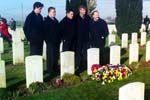
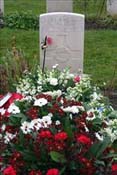
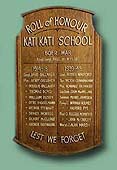
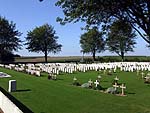


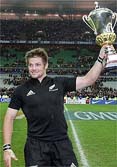
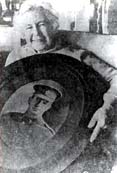

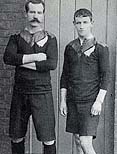
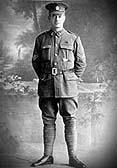


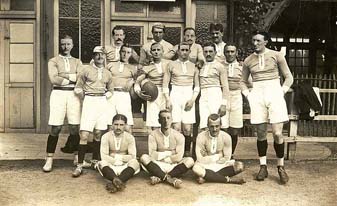
FANTASY TEAM OF WWI |
Rugby legends who died in WWI including Gallaher (back left) are other internationals
from South Africa, England, Australia, Scotland, Ireland Wales and Franced |

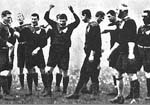
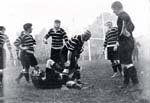
Dave Gallaher, WWI Soldier, 1917 |
...And the Cartoon |
The 'Brains' - Gallaher & Stead |
Keeping fit on the ship to the UK, 1905 |
The 'Originals' 1905 |
Team against Bristol, 1905 |
Dave Gallaher, leading onto the field, 1905 |
Gallaher on the ground, Leicester, 1905 |
Celebrating another victory! |
Troop Ship 'Aparima', 1917 |
Nine Elms Cemetery |
Gallaher's grave |
Gallaher Shield |
All Black Captain Ritchie McCaw with the new Gallaher Trophy, France |
Nora Gallaher |
Katikati School roll of Honour |
All Blacks visit gravesite, 2000 |

'The Complete Rugby Footballer', by Gallaher and Stead |
Or visit another of the 'First XIII' |
BACK TO MAIN MENU |
Last Updated Information - 06 March 2010 |